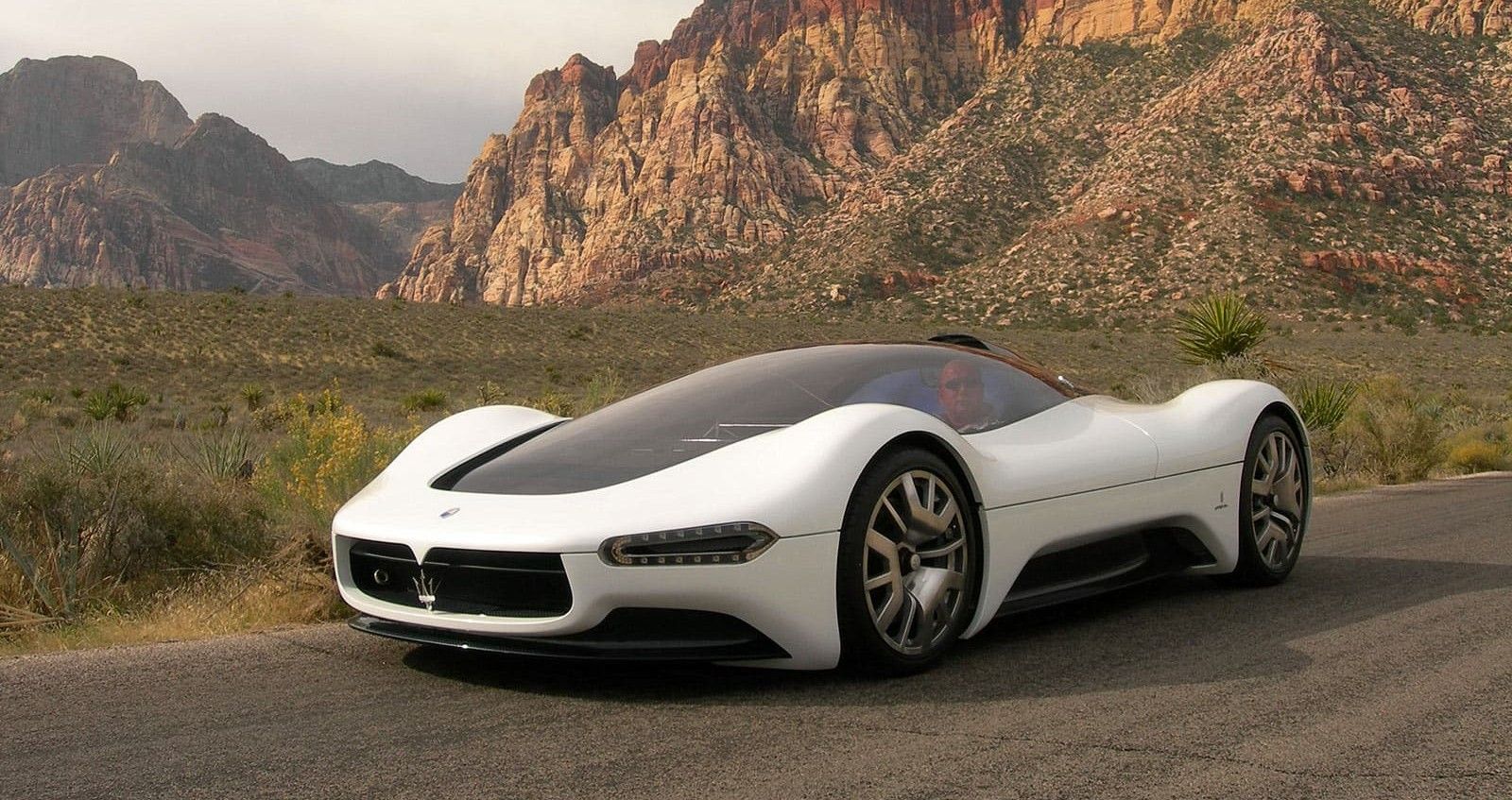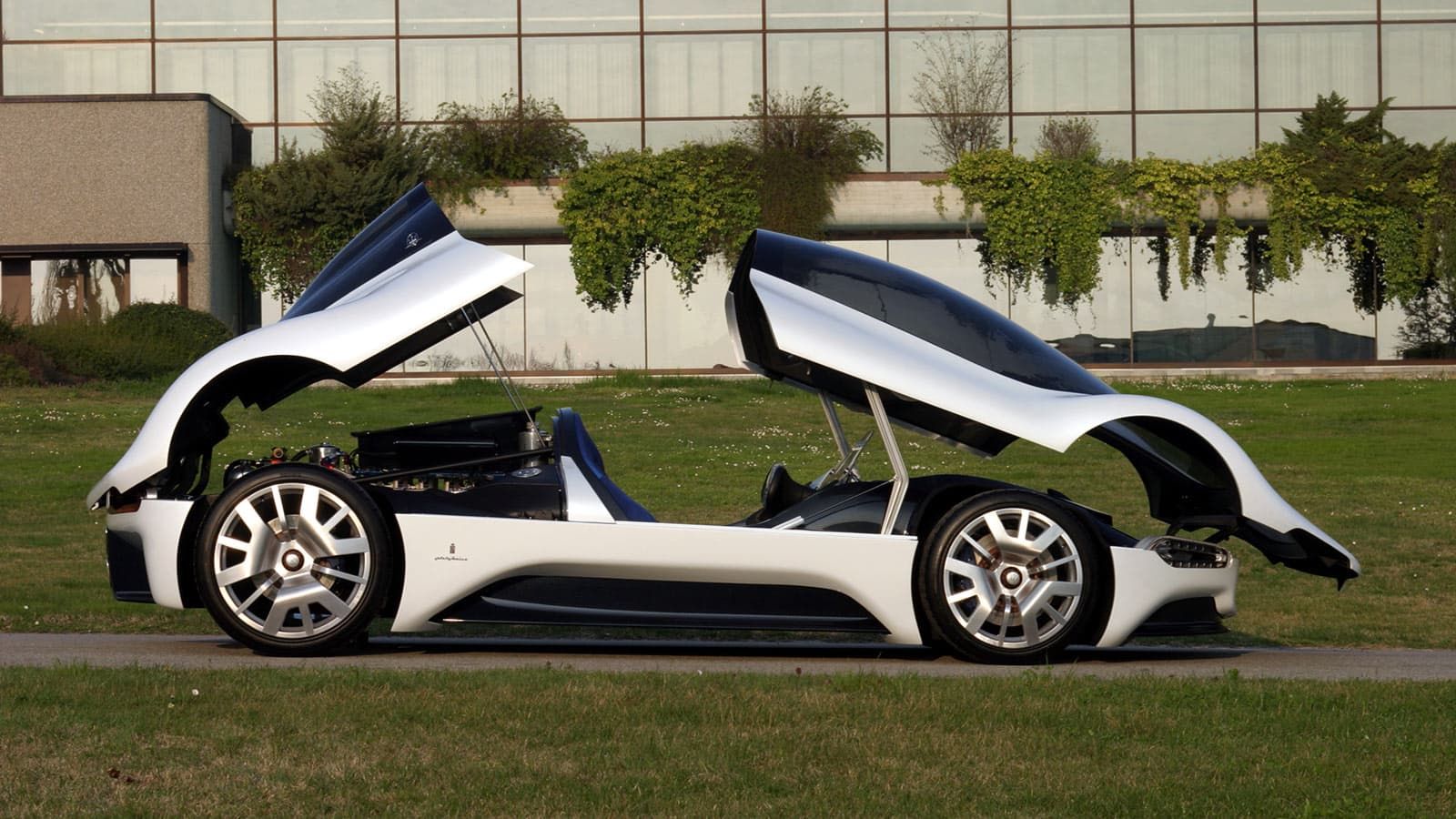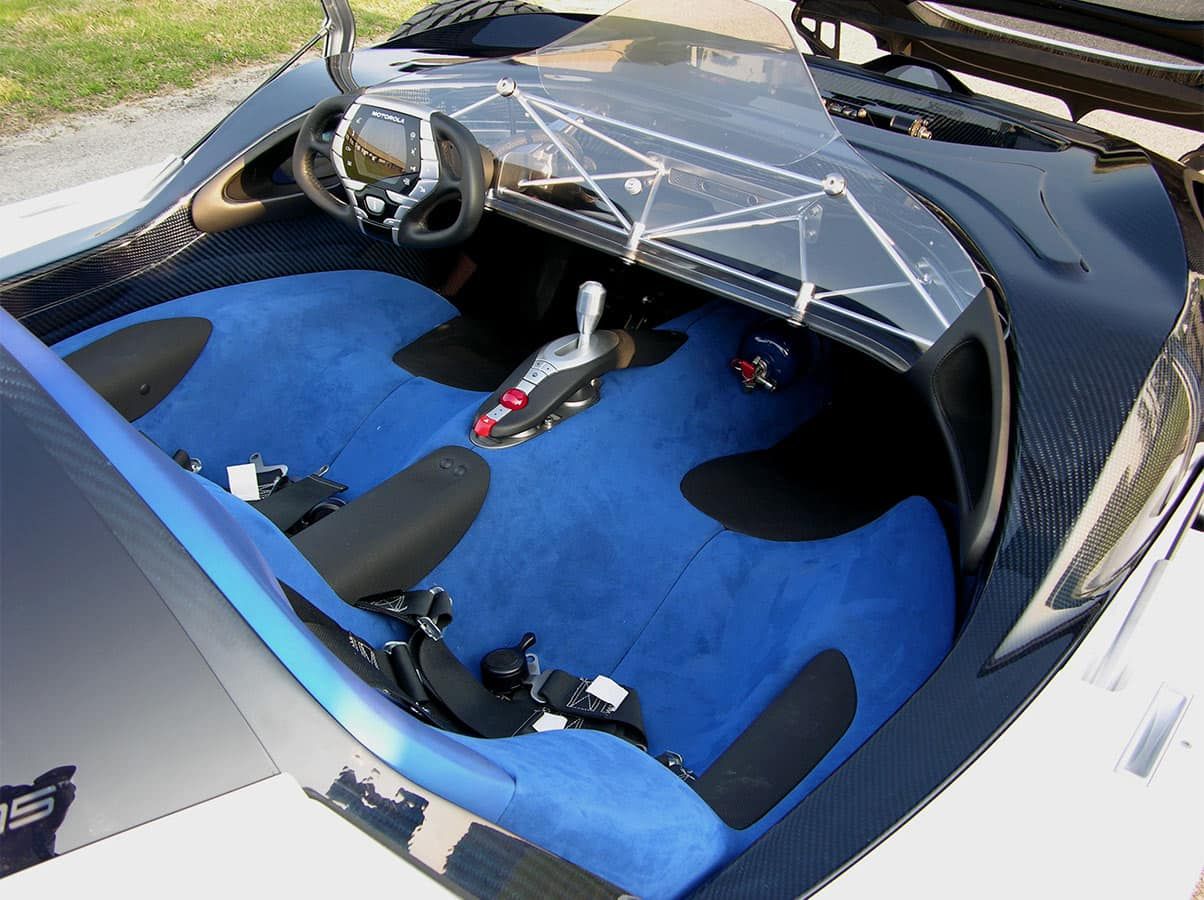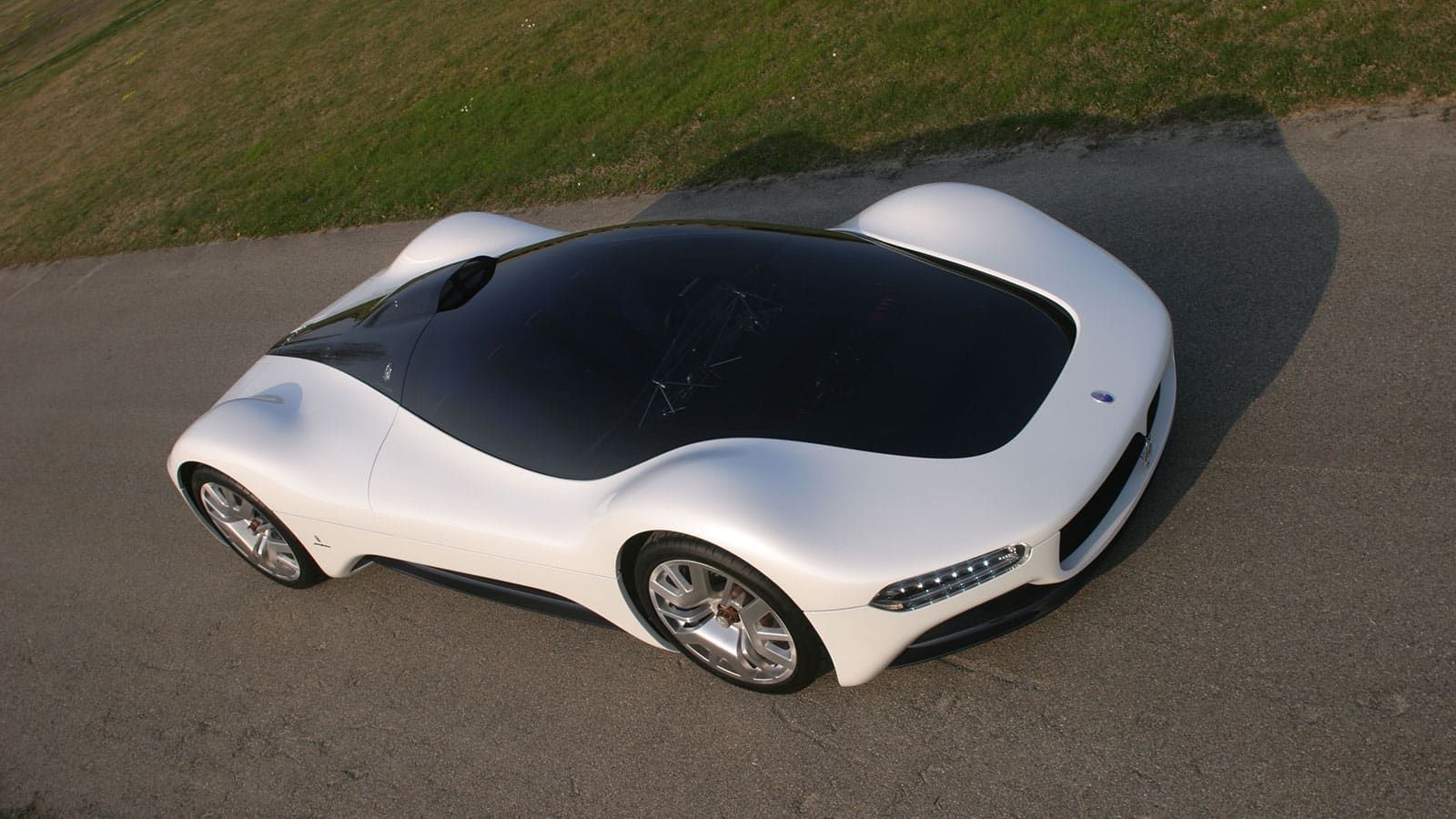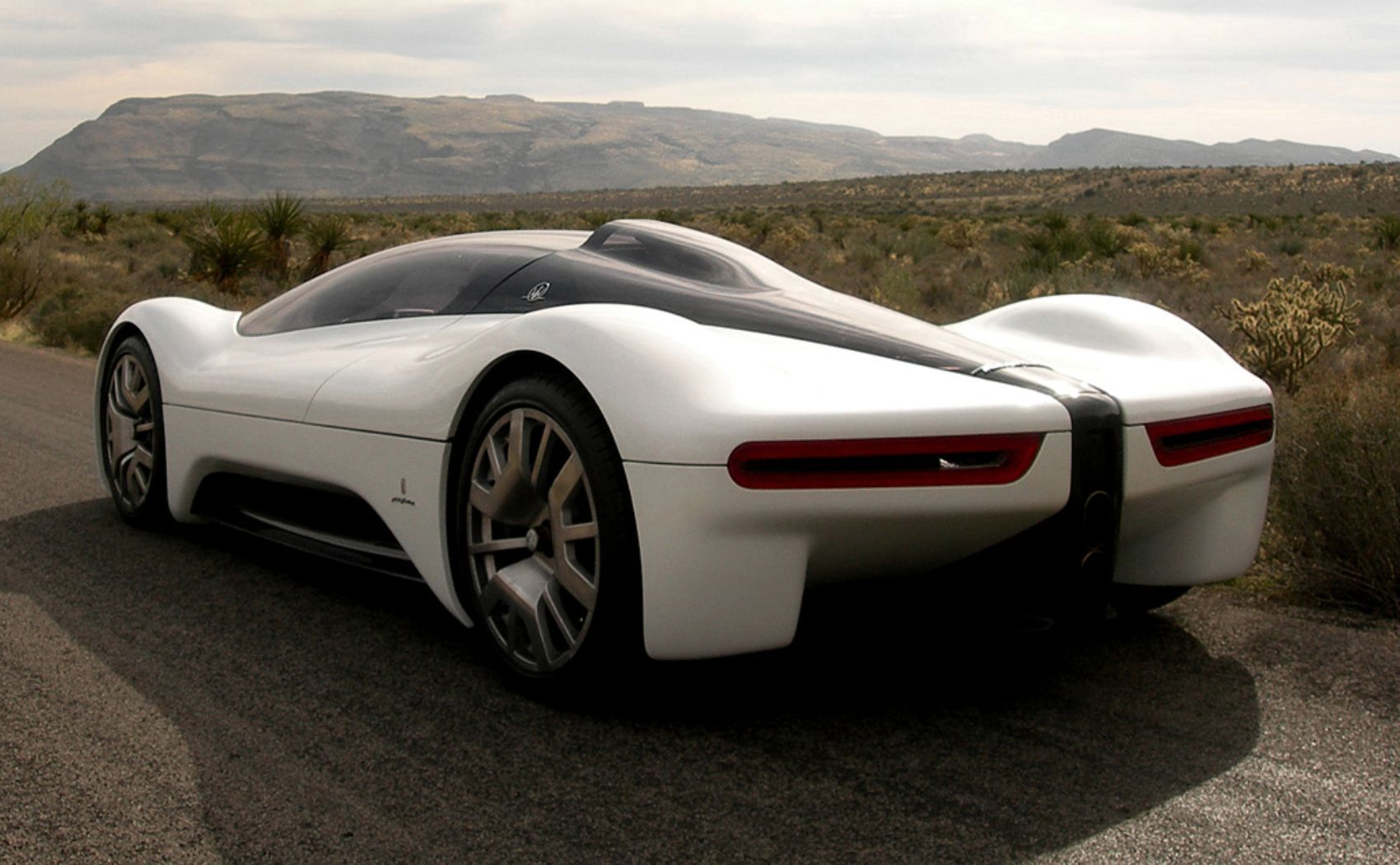The name sounds a bit eerie for what is otherwise an awesome car to look at. The Maserati Birdcage 75th was revealed at the Geneva Motor Show in 2004. Some of us cut-out pictures of it from magazines; that's how fascinating it looked. The boffins at Maserati used a race-spec carbon fiber honeycomb chassis that was heavily re-structured to make way for the flowing design and the relatively advanced interior. The team used complex 3D renderings, and with all the zeal that went into the making of the car, the project was done with in two months. The name 'Birdcage' is a familiar one to those who know their Maserati race cars from the '60s - and this concept was a tribute to them. The spaceframe chassis was like a jigsaw puzzle; it had multiple steel tubes that would give you visuals of a bird's cage.
Maserati's Birdcage 75th Was Designed By Pininfarina
It is always hard to hate on a concept car. Most cars derived from them look entirely different by the time they reach production, while some just stay as concepts, like the Birdcage 75th. It's disheartening in a way, but it's also the reason why some concepts are iconic.
The nose of the Birdcage 75th has a massive air intake grille that was designed to channel fresh air into the radiator. The headlights looked anything but regular; these were slender LEDs made by OSRAM, and the integrated aluminum air ducts were put there to cool the lights. At the rear, the Birdcage is just as showy, and we're not complaining. The sleek tail lamps have air ducts in them too, but unlike the headlights, these were used to discharge hot air from the engine. Just above the tail lights are two active spoliers that extend upwards at high speeds to enhance downforce.
What had, and still has us, bowled over is the teardrop-like Perspex canopy that covered nearly the entire length of the car, giving you a look-in of what was inside, revealing part of the chassis and not to mention, the glasshouse effect for the driver inside was encapsulating. The Birdcage concept did not have doors, but then, you don't need doors when the entire canopy could be lifted, like fighter planes, allowing for ingress and egress.
Maserati's Birdcage Had An Interior Like No Other
We know it's going to take a while for this to sink in, but yes - Motorola was responsible for the design of the cockpit, which had a pair of blue suede upholstered seats incorporated in the monocoque. The steering wheel was designed to resemble the ones in Formula 1 cars, except that it had a huge large display with a lot of buttons outlining it. Another design element worth a mention is the head-up display that reflected information onto a big, transparent panel held in place by multiple exposed beams.
Maserati's Birdcage Was Powered By The MC12 GT1's Engine
Maserati put the the M144B/2 naturally-aspirated 6.0-liter, V12 engine in the back, behind the seats. The unit comes from the Ferarri Enzo's bloodline, and power was bumped-up to 700hp, after removal of the air restrictors. The 6-speed automated manual transmission was taken out directly from the Maserati MC12 road car. The Birdcage was never driven on the limit, simply because, it was a concept and costed Maserati a lot of money to make it. Nobody would've wanted the Birdcage to go up in flames in the same way the Mazdai Furai did; not us at least.
There Will Be No Other Maserati Birdcage Again
There are chances of Maserati using the name on a future EV product, but it's likely to be an entirely different concept; perhaps even made in limited numbers. After its unveiling at the Geneva Motor Show, the future of cars seemed bright in the eyes of those who knew about it, and more so, for those who got to witness it in person. It even won the Best Concept award at the event. Some even went all out and called it the world's most beautiful car. The Maserati Birdcage 75th continues to look gorgeous, and it's no bolt from the blue, considering it was designed in Italy by Pininfarina. The purpose of us writing this, is to get the unfamiliar noticed by the younger generation. If you ever have the chance, visit Pininfarina's museum in Turin, Italy - the Birdcage is waiting to meet you there!
Source: autoevolution

